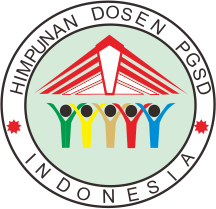DEVELOPING A TEACHING MODEL OF BASIC MOVEMENT FOR KIDS AT 2 TO 4 YEARS OLD
DOI:
https://doi.org/10.30595/dinamika.v6i1.902Keywords:
Teaching Model, Basic Movement, two-to-four year-old childrenAbstract
The aim of this study was to develop a teaching model of basic movement for children of 2 to 4 years old. The teaching model was based on their development aspect and characteristics and it was focused on three basic movements: locomotors, non locomotors, and manipulative movements. This is a research and developmental study. The development of the teaching model was conducted in seven steps: 1) collecting information; 2) information analysis; 3) developing initial product; 4) expert`s validation and revision; 5) preliminary field test and revision; 6) main field test and revision; and 7) making the final product. The subject of this research was 2 to 4 year old children. The result of this study is in the form of a manual for basic movement teaching for two to-four-year-old children, that consists of seven teaching models: 1) Creeping and Crawling; 2) Walking on the Rope; 3) Throwing Bean Bag to the Hula-Hoop; 4) Bowling Games; 5) Parachute Games; 6) Climbing; and 7) Jumping. As a conclusion, the teaching model is very good and effective. From the evaluation of experts and teachers, it can be concluded that the developed model is very good and appropriate with the characteristic, growth, and development of two-to-four-year-old children`s movementReferences
Allen dan Lynn. (2010). Profil perkembangan anak: prakelahiran hingga usia 12 tahun (terjemahan dalam bahasa Valentino). Jakarta. Indeks.
Borg, Walter R. dan Gall, Meredith, Damien. (1983). Educational research: An introduction (4th ed). New York: Longman Inc.
Djemari Mardapi. (2012). Pengukuran penilaian dan evaluasi pendidikan. Yogyakarta. Nuha Medika.
Gabbard, Carl. et all. (1987). Physical education for children: Building the foundation. New Jersey: Prentice-Hall, Inc.
Heri Rahyubi. (2012). Teori-teori belajar dan aplikasi pembelajaran motorik. Bandung: PT. Nusa Media.
Joyce, B. Dan Weil, M. (2004). Model of teaching. USA: Pearson Education, Inc.
Kogan, Sheila. (2004). Step by step a complete movement education curriculum. USA: Human Kinetics.
Malina, Robert M, Bouchard, Oded. (2004). Growth, maturation, and physical activity. USA. Human Kinetics.
Ria Lumintuarso. (2011). Pembinaan multilateral dalam pendidikan jasmani dan olahraga prestasi. Disertasi Doktor, tidak diterbitkan, Jakarta. Universitas Negeri Jakarta.
Schmidt, Richard A. (2005) Motor control and learning. Los Angeles: Human Kinetics.
Sukadiyanto. (April 2012). Prinsip pembelajaran fisik motorik pada anak usia dini. Pelatihan pembelajaran fisik motorik bagi guru TK se-DIY. Yogyakarta: Pascasarjana UNY
Syaiful Sagala. (2012). Konsep dan makna pembelajaran. Bandung: Alfabeta.
Waluyo Adi, dkk. (2007). Pendidikan taman penitipan anak/kelompok bermain. Yogyakarta: PGTK FIP UNY.
Downloads
How to Cite
Issue
Section
License
Authors who publish with this journal agree to the following terms:
Authors retain copyright and grant the journal right of first publication with the work simultaneously licensed under a Creative Commons Attribution License that allows others to share the work with an acknowledgement of the work's authorship and initial publication in this journal.
Authors are able to enter into separate, additional contractual arrangements for the non-exclusive distribution of the journal's published version of the work (e.g., post it to an institutional repository or publish it in a book), with an acknowledgement of its initial publication in this journal.
Authors are permitted and encouraged to post their work online (e.g., in institutional repositories or on their website) prior to and during the submission process, as it can lead to productive exchanges, as well as earlier and greater citation of published work (See The Effect of Open Access).

Dinamika Jurnal Ilmiah Pendidikan Dasar is licensed under a Creative Commons Attribution 4.0 International License.













